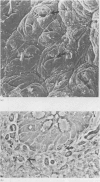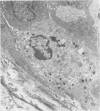Abstract
In a longterm study, we have divided coeliac disease into two distinct entities (abortive and permanent) based on the occurrence of large granular lymphocytes and natural killer cells within the epithelium of the gut. The natural killer and large granular lymphocytes cells were characterised by either immunohistochemical or phase contrast microscopical procedures on the initial biopsies from 15 children with coeliac disease. They were compared with seven individuals with partial villus atrophy and eight with normal villous morphology. Although the histological findings were similar in the initial biopsies of all patients with coeliac disease, the patients with permanent coeliac disease had a significantly lower number (0.41(0.61)cells/mm2) of large granular lymphocytes and natural killer cells compared with those patients with abortive coeliac disease (11.93 (6.23) cells/mm2). Those in the permanent group developed a significantly more pronounced flat mucosa after gluten challenge or provocation compared with the abortive group and had to remain on a strict gluten free diet in contrast with those in the abortive group. Thus, the occurrence of intraepithelial large granular lymphocytes and natural killer cells characterises two distinctly different coeliac diseases. Based on our results neither the histological evaluation of the biopsy nor the utilisation of the revised European Society for Paediatric Gastroenterology and Nutrition (ESPGAN) Criteria are adequate in diagnosing the two types of coeliac disease.
Full text
PDF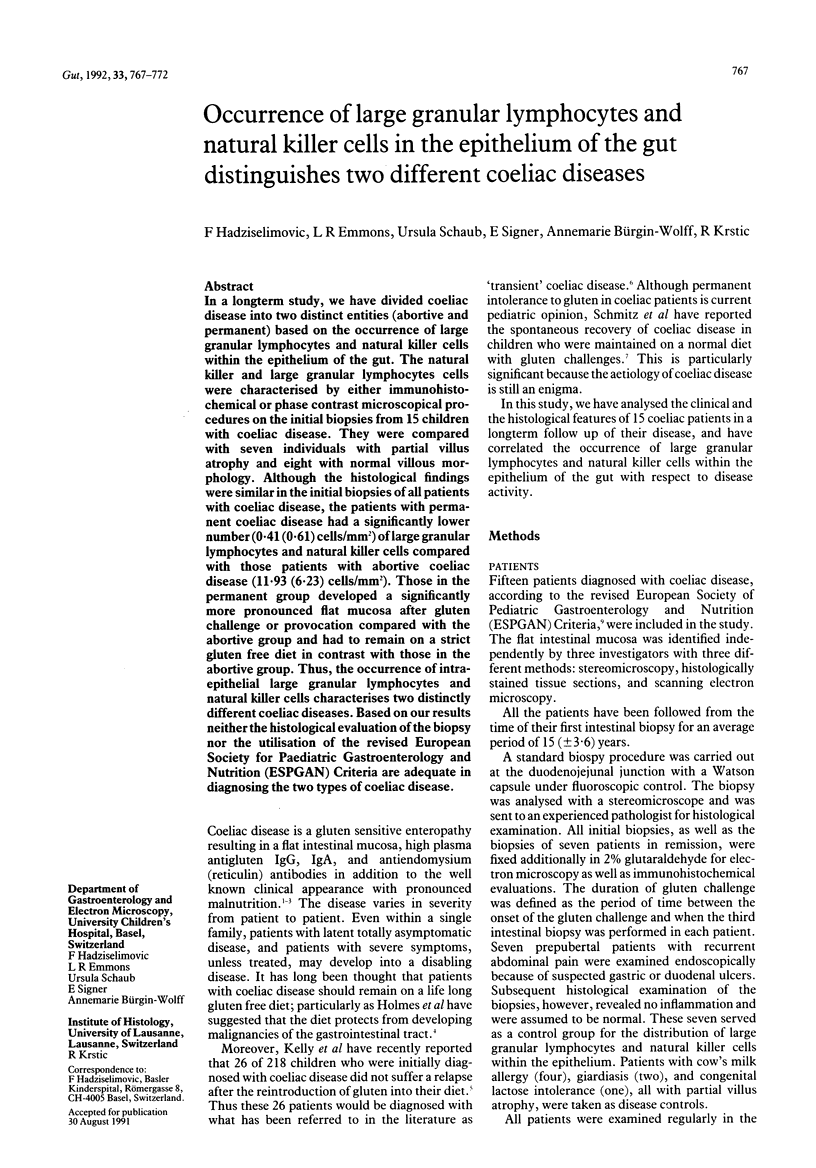
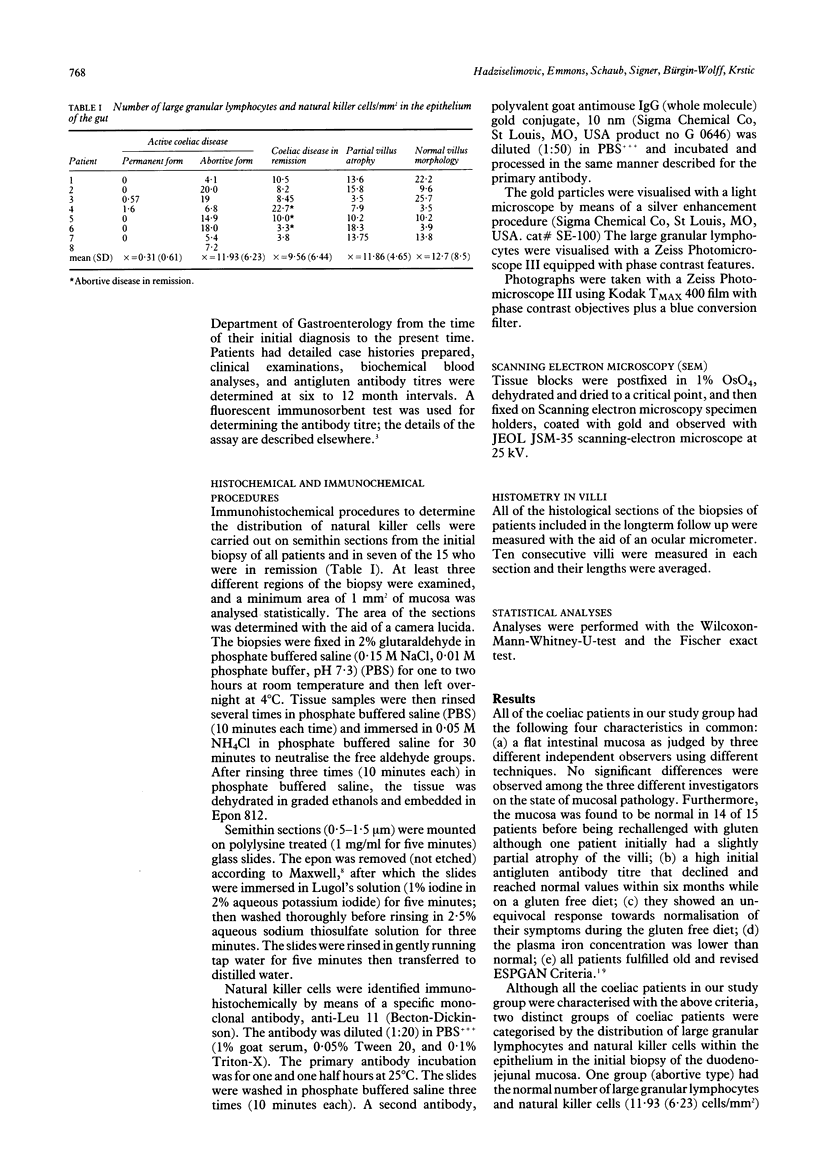
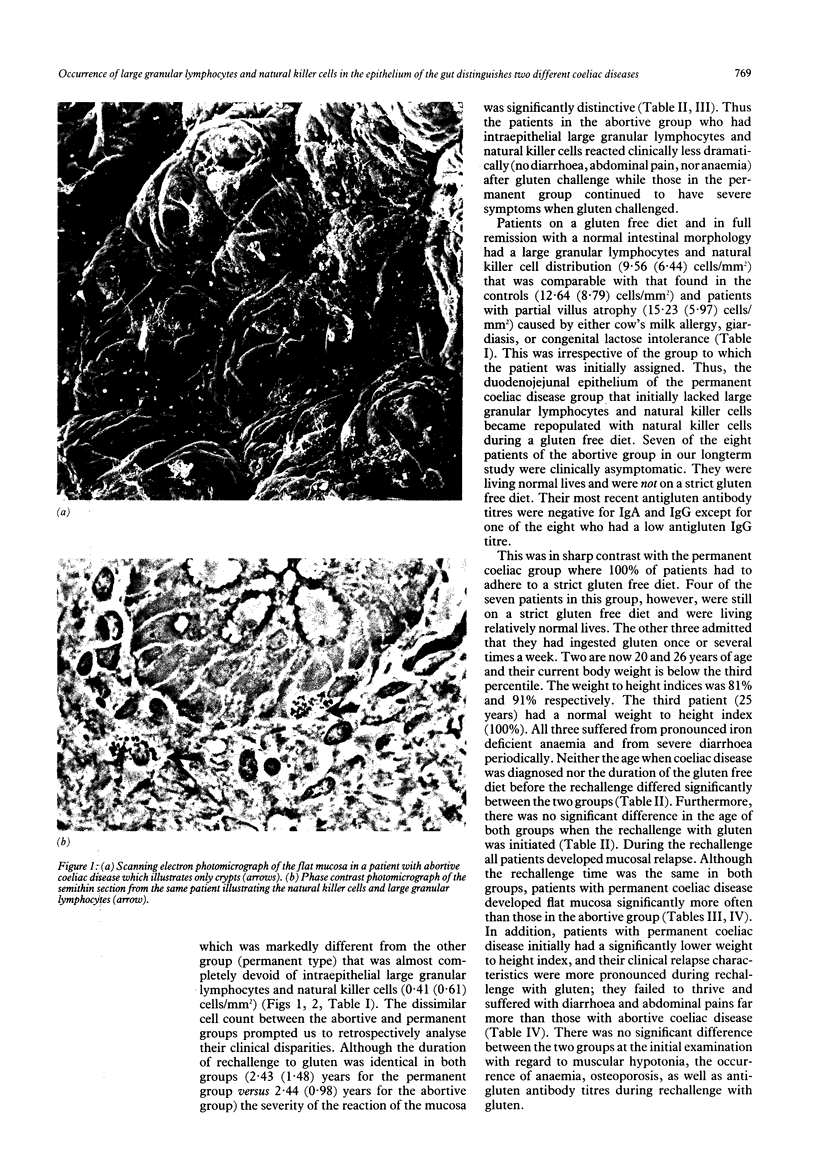
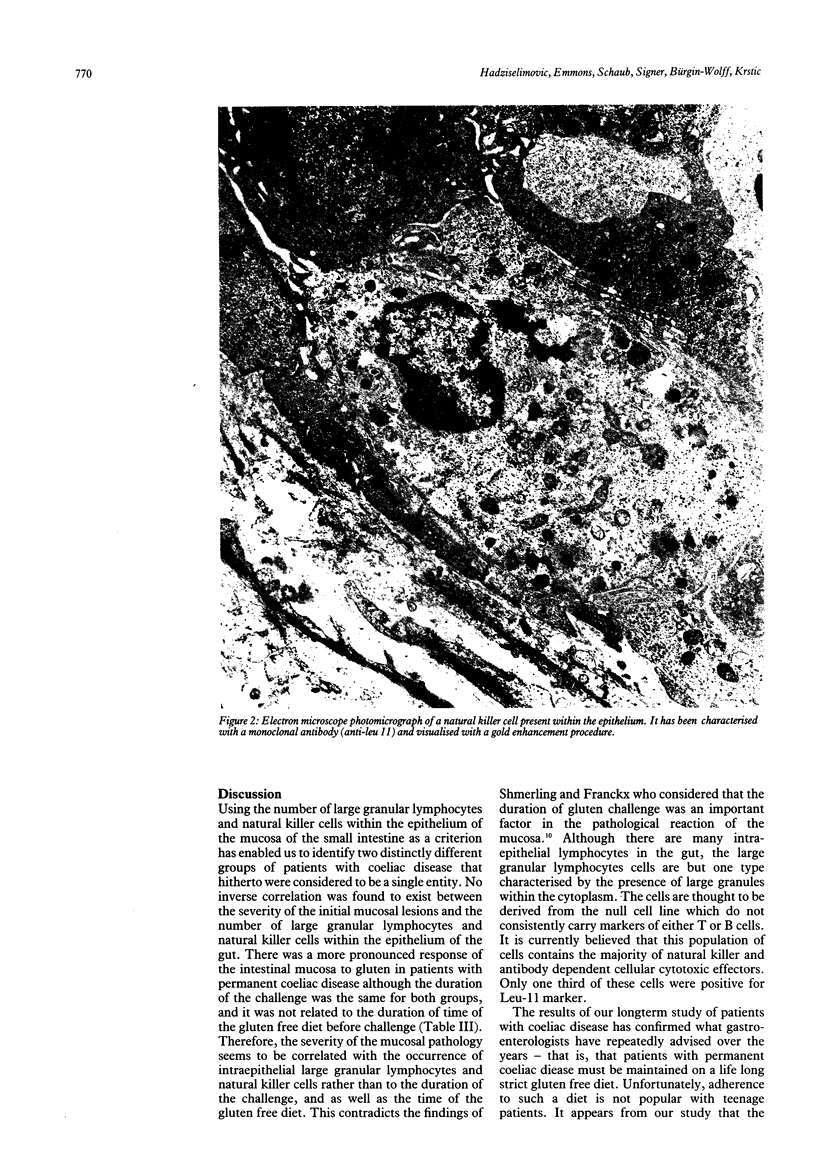
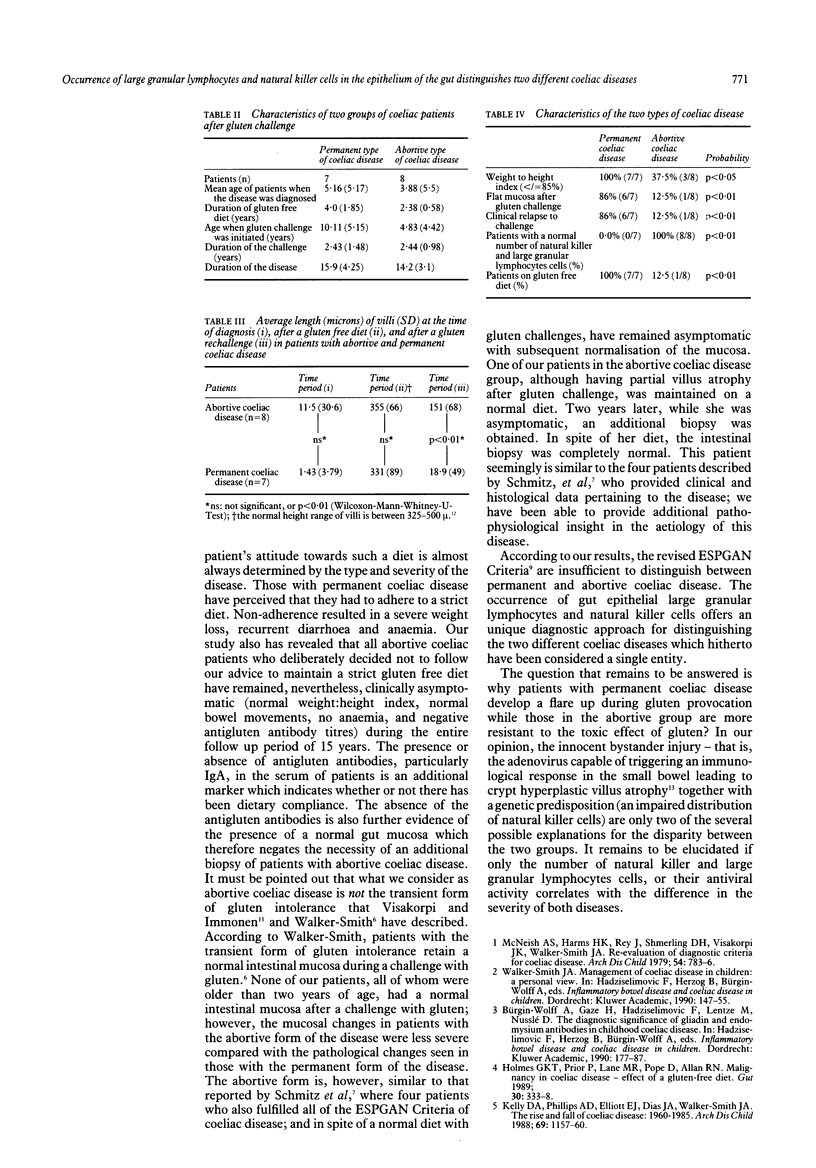
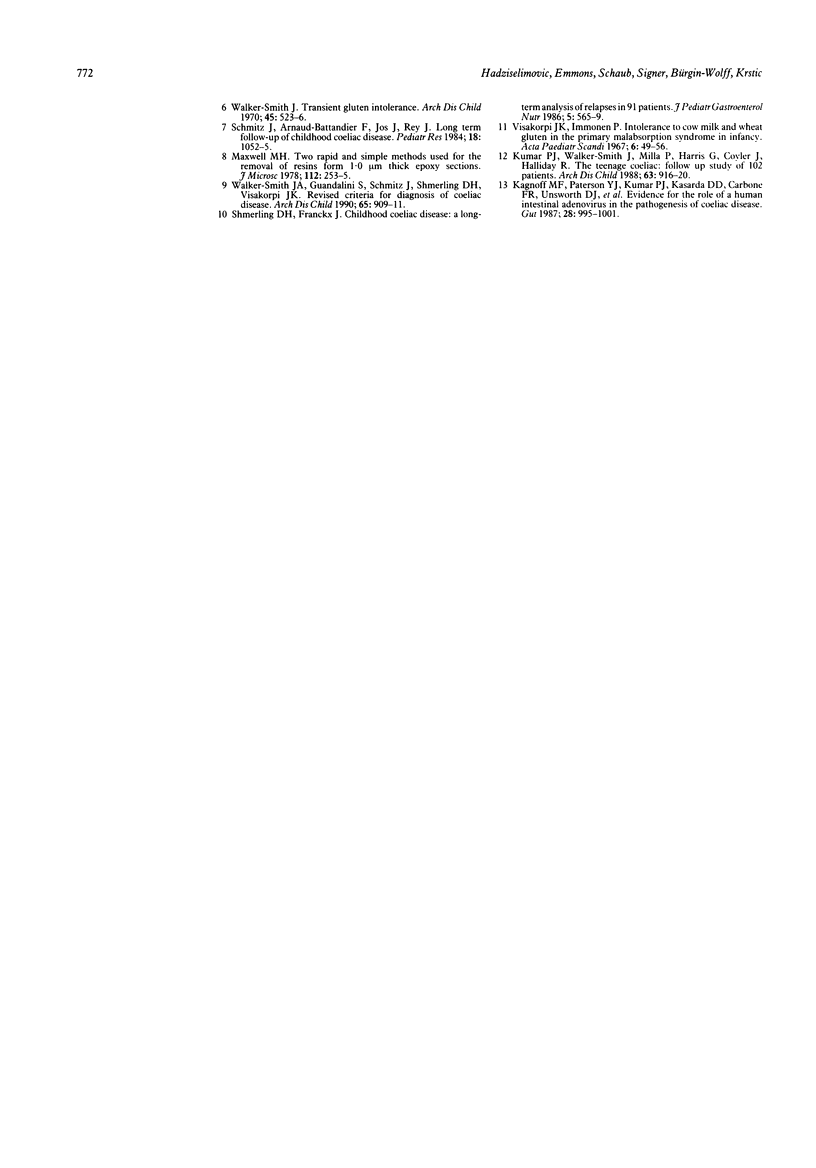
Images in this article
Selected References
These references are in PubMed. This may not be the complete list of references from this article.
- Holmes G. K., Prior P., Lane M. R., Pope D., Allan R. N. Malignancy in coeliac disease--effect of a gluten free diet. Gut. 1989 Mar;30(3):333–338. doi: 10.1136/gut.30.3.333. [DOI] [PMC free article] [PubMed] [Google Scholar]
- Kagnoff M. F., Paterson Y. J., Kumar P. J., Kasarda D. D., Carbone F. R., Unsworth D. J., Austin R. K. Evidence for the role of a human intestinal adenovirus in the pathogenesis of coeliac disease. Gut. 1987 Aug;28(8):995–1001. doi: 10.1136/gut.28.8.995. [DOI] [PMC free article] [PubMed] [Google Scholar]
- Kumar P. J., Walker-Smith J., Milla P., Harris G., Colyer J., Halliday R. The teenage coeliac: follow up study of 102 patients. Arch Dis Child. 1988 Aug;63(8):916–920. doi: 10.1136/adc.63.8.916. [DOI] [PMC free article] [PubMed] [Google Scholar]
- Maxwell M. H. Two rapid and simple methods used for the removal of resins from 1.0 micron thick epoxy sections. J Microsc. 1978 Mar;112(2):253–255. doi: 10.1111/j.1365-2818.1978.tb01174.x. [DOI] [PubMed] [Google Scholar]
- McNeish A. S., Harms H. K., Rey J., Shmerling D. H., Visakorpi J. K., Walker-Smith J. A. The diagnosis of coeliac disease. A commentary on the current practices of members of the European Society for Paediatric Gastroenterology and Nutrition (ESPGAN). Arch Dis Child. 1979 Oct;54(10):783–786. doi: 10.1136/adc.54.10.783. [DOI] [PMC free article] [PubMed] [Google Scholar]
- Revised criteria for diagnosis of coeliac disease. Report of Working Group of European Society of Paediatric Gastroenterology and Nutrition. Arch Dis Child. 1990 Aug;65(8):909–911. doi: 10.1136/adc.65.8.909. [DOI] [PMC free article] [PubMed] [Google Scholar]
- Shmerling D. H., Franckx J. Childhood celiac disease: a long-term analysis of relapses in 91 patients. J Pediatr Gastroenterol Nutr. 1986 Jul-Aug;5(4):565–569. [PubMed] [Google Scholar]
- Walker-Smith J. Transient gluten intolerance. Arch Dis Child. 1970 Aug;45(242):523–526. doi: 10.1136/adc.45.242.523. [DOI] [PMC free article] [PubMed] [Google Scholar]



